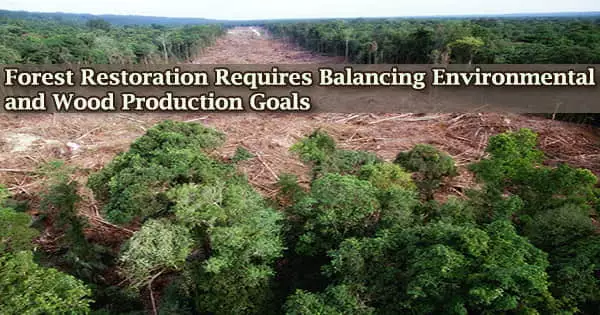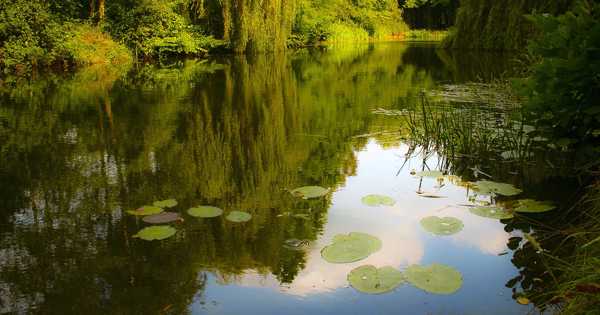For the greatest climate and environmental benefits, forest restoration plans should prioritize restoring native forests, however, these benefits come at a cost in terms of wood production when compared to tree plantations.
A major new study published today in the journal Science found that diverse native forests store more above-ground carbon, provide more water to neighboring streams, maintain biodiversity, and reduce soil erosion than simple tree plantations, while plantations have an edge in the wood output.
In terms of biodiversity conservation and four key functions of value to humans or ‘ecosystem services’ provided by a forest: carbon storage, soil erosion control, water provisioning, and wood production, the study compared the relative benefits of restoring native forests versus establishing a variety of simple tree plantations.
Forest restoration is gaining traction around the world, partly in response to climate change: deforestation is a major source of carbon emissions, and forest restoration can be a “nature-based climate solution” to combat global warming.
Forest restoration is frequently carried out for the purpose of water provisioning and flood regulation, as well as to prevent soil erosion and create wood products.
“Establishing a tree plantation is useful for producing wood but not so good for restoring biodiversity. This is a huge missed opportunity for conservation,” said Dr. Fangyuan Hua, a researcher previously based in the University of Cambridge’s Department of Zoology, and first author of the paper. Hua now works at Peking University’s Institute of Ecology in China.
She added: “When the goal of a forest restoration scheme includes wood production, then there’s a trade-off to be made between environmental and production outcomes.”
Tree plantations of just one or a few tree species, rather than the restoration of diverse native forests, are commonly used in forest restoration programs aiming at providing ecosystem services, based on the implicit premise that tree plantations are just as effective in delivering these services. The authors, however, claim that there is no solid scientific proof for this.
Establishing a tree plantation is useful for producing wood but not so good for restoring biodiversity. This is a huge missed opportunity for conservation. When the goal of a forest restoration scheme includes wood production, then there’s a trade-off to be made between environmental and production outcomes.
Dr. Fangyuan Hua
The present synthesis was carried out by an international, multidisciplinary team of researchers from seven nations, and it is based on an unprecedentedly big database, which contains about 26,000 records from 264 studies completed in 53 countries.
“This is the first time that the relative performance of different forest restoration approaches in delivering forests’ most salient services has been assessed simultaneously. We can now begin to understand the synergies and trade-offs across different restoration goals, and so help inform decision-making,” said Professor Andrew Balmford in the University of Cambridge’s Department of Zoology, senior author of the paper.
The study discovered that, similar to biodiversity, natural forests perform all three environment-oriented ecosystem services aboveground carbon storage, soil erosion management, and water supply better than tree plantations.
Plantation-style forest restoration has the most to lose in terms of soil erosion control, and the deficiency of plantations in terms of water provisioning is more problematic in drier climes, precisely where water is scarcer.
“When restoration goals are about environmental benefits, even if not specifically for the sake of biodiversity conservation, we should aim to restore native forests and biodiversity will gain as a co-benefit,” said Hua.
However, the scant information available demonstrated that tree plantations can exceed native forests in terms of wood output, underlining a key trade-off.
Fast-growing species including pines, firs, and Eucalyptus are commonly used in tree plantations around the world. These trees grow tall and straight, and fertilisers and weeding are frequently used in actively maintained plantations to prevent other plants from competing for nutrients and light.
Native forests, on the other hand, are made up of a variety of tree, shrub, and herbaceous species and are not typically maintained for growth. This creates a more ideal ecosystem with a wider range of food and other resources for a variety of plants and animals to survive, but it also reduces the efficiency of wood production.
“The trade-off between the environmental and production benefits a forest can provide has not been discussed much before. Restoration probably cannot meet all goals at once,” said Professor David Edwards at the University of Sheffield’s School of Biosciences and another senior author of the study.
This conclusion suggests that plantations may indirectly give environmental advantages by allowing other, higher-biodiversity forests to be “spared” from being cut down for wood production, in addition to the need to weigh competing aims.
“Plantations need to be integrated into a coherent land-use plan so that their better performance at producing wood gets translated into improved conservation of environmentally valuable forests elsewhere,” Balmford added.
The study also discovered that many old or abandoned plantations around the world that appear to be no longer employed for wood production perform worse than native forests in terms of environmental performance. Given how ubiquitous these plantations appear to be, returning them to native forests is likely to have major environmental advantages.
















